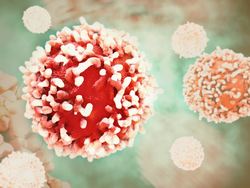Sphingolipids in cancer
Sphingolipid molecules have emerged as key players that aid malignant cells to resist anticancer regimens. Intriguingly, certain sphingolipids promote tumourigenesis while others act as tumour-suppressors. The tumour-suppressor activity of ceramides has prompted development of different formulations of synthetic ceramides in anticancer therapies with, however, limited efficacy. Manipulation of cellular sphingolipid balance within cells as an alternative approach could have higher chances of success. Recent evidence indicates the presence of a ceramide sensor that protects cells against ceramide-induced cell death. Disrupting sensor function causes accumulation of ceramides in the endoplasmic reticulum (ER) and their flow into mitochondria, triggering a mitochondrial pathway of apoptosis. However, the molecular principles that govern ceramide trafficking are currently unclear. The primary objective of the EU-funded MECETERMITI (Mind the gap: mechanism and impact of ceramide trafficking at the ER-mitochondrial interface) project was to unveil the mechanisms by which newly synthesised ceramides can commit cells to death. In this context, researchers used the photoactivatable and clickable ceramide analogue, pacCer to study ceramide transport at the ER-mitochondrial junctions. They identified two porins as the principal candidate ceramide-binding proteins in mitochondria. Porins were also implicated in mitochondrial apoptosis by inducing the cytosolic release of key proteins. Nonetheless, further investigation is required to validate their role as downstream ceramide effectors in mitochondrial apoptosis. Considering that several anti-cancer regimens cause cell cycle arrest and death by interfering with the ceramide pathway, MECETERMITI findings have clinical significance. Increasing endogenous ceramide levels by de novo synthesis or prohibiting ceramide exit from the ER constitute valid anti-cancer approaches.







